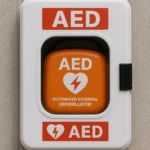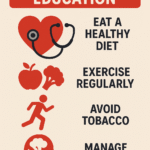
Enhance TB Diagnosis with AI and Cough Sound Analysis
Introduction to AI in TB Diagnosis
Machine learning has changed the traditional diagnostic practice of tuberculosis (TB) by using a computer to listen to the sound of coughs. This development is essential at the moment, as TB continues to be a significant health issue globally.
Importance in Today’s Healthcare Landscape
- Early Detection Saves Lives: A professional can treat a patient on time.
- Accessibility Matters: In this case, computerized algorithms bring light to remote areas without resources.
- For Patients: The chances of better recovery are higher when the diagnosis is quick.
- For Researchers: Good data are the building blocks of treatments for patients that could be life-changing.
- For healthcare providers, the affordability of healthcare technologies offered by digital solutions increases patient satisfaction and outcomes.
- AI taking a step in the TB diagnosis is not a new thing. It has grown up as a necessary thing. In the future, machines will be detected not only with the help of doctors but machines will also with treatment recommendations.
Historical Context
Integrating artificial intelligence (AI) in healthcare systems implies the beginning of a new era in medical diagnosis. The authorities or surgical staff were disadvantaged regarding speed because they depended too much on manual examinations and patient history, which were often incomplete.
Evolution in Healthcare
- Data-Driven Insights: Using machine learning in diagnostics has been a turning point in medical history, allowing the rapid examination of large data sets.
- Sound Analysis: Examining cough sounds is one of the most astonishing findings in the medical field because these sounds can provide a doctor with a lot of new, non-invasive information.
Impact on Medicine and Public Health
- Faster Diagnosis: The use of AI can ensure less time between the suspected case and the decision to start treatment, and hence, in time, people can be saved from dying.
- Accessibility: The future of healthcare seems brighter with the incorporation of tech, which can be utilized for TB testing, especially where no test is currently available.
- In short, AI improves diagnostic accuracy and drives the future of public health by making disease detection more efficient and accessible.
Current Innovations in TB Detection
Application of AI to Diagnose TB at an Early Stage
Simulated learning of TB recognition is the most cost-effective way of early diagnosis to rapidly assess the risk of infection to the patient based on the recorded cough sounds. The technology is one of the new chemists of the health sector and therefore let me tell you what will be the benefits:
- Speed: AI procedure speeds up diagnosis a lot.
- Accurateness: It is much more accurate in the TB detection process than traditional methods.
- Accessibility: The adoption of technology has led to the provision of health services on the planet.”
- In a”world that is often a battlefield for TB, this is one of the significant things being done differently. This revolutionary change can turn around human lives and save you time.
Impact of AI on Tuberculosis Detection
The application of AI in healthcare is reshaping the diagnosis of TB. A deeper analysis of cough sounds enables us to catch the disease early, thus guar.
A Favorable Influence on the Patients’ Families’
- Quicken Diagnosis: Prompt diagnosis should be followed by quick treatment.
- Relief from Anxiety: To account for concerns, the doctors should handle early detection.
Public Health Improvements
- Wider Accessibility: The AI tools reach places with the most limited resources. Health services in these areas are hardly available, but AI makes the world a healthcare cocoon for these places.
- Preventiveness: Early detection of a disease makes controlling the spread of diseases more effortless and more effective.
- The transition to AI-driven diagnostic medicine is not only a fashion but also a step toward saving everyone’s health.
Impact on Healthcare Professionals
AI in tuberculosis diagnosis is giving healthcare professionals new tools to diagnose and manage their duties. This system’s technology is helping the PFHCP detect TB in a very secure way, improving patient outcomes. However, it comes with its own set of challenges.
Initiatives Faced by Institutions
- Training Requirements: Professionals should know how to use AI tools. Therefore, they must receive the appropriate training in comprehensive training programs.
- Cost Implications: Investing in AI deep technologies can be very costly for healthcare institutions, which may thus face enormous financial stresses.
- Implementation Hurdles: Introducing AI systems to current workflows may lead to setbacks and interruptions during processing.
The Opportunities for Improvement in the Technology
Machine learning technology has brought many challenges. Still, on the other hand, it is the one that has been helpful in the field. These advantages include:
- Improved resource management: AI can automate and streamline processes, which would save time and allow staff to focus on patient care.
- Better Patient Care Thrilled: Thanks to VibentVibenta’s intervention ability to detect early disease, the treatment can be readily applied to give addicted patients a second chance to live.
- In short, despite AI’s challenges, the possible benefits for healthcare professionals and institutions in TB diagnosis are immense.
The Move to AI in Healthcare
Key Benefits of Adopting AI Solutions
AI integration in healthcare is a development that carries with it a change in how service delivery is executed. Thus, this is accompanied by the transformation that comes with it. The benefits are:
- Early Diagnosis: Thanks to a machine learning algorithm, a sound proper cough can be analyzed to detect tuberculosis in time. This leads to an improvement in treatment offers.
- The Efficiency Rise: The surgery rooms are equipped with InnoviInnovio’sVoice intercom system, which, through voice command to a mobile robot, pulls up and brings away supplies, among other tasks, in a codeless surgical environment.
- Better Patient Outcomes: Increasing the early detection of TB cases would also curb patient mortality from TB.
- Innovative solutions are essential for the forthcoming period, in which health care becomes more preventive than reactive. After the 1879 first patent for reliable, practical electric vehicles, we are now talking about electric cars that drive across the United States. This is the next big step in the transportation industry. Baheya is a brave girl who survived by a miracle. Baheya tells her story, so it must be accurate and evokes absolute sympathy from her friends and family, who say to each other, “What a time we live in … nearly dead and then back among us!” By applying the capabilities of AI, we rise above the limits of human performance more efficiently and save lives in the process.
Challenges and Ethical Concerns in AI-Driven Tuberculosis Diagnosis
Patient Perspectives
- Privacy Risks: Patients are worried that the app’s producers will listen to their telltale cough sounds.
- Trust Issues: There is doubt that AI technologies will be right to interpret a person, so such people will be hesitant to offer the information they have.
Researcher Concerns
- Data Bias: When the data is imbalanced, for example, the findings will be altered greatly.
- Interpreting AI Outputs: One problem is that researchers must deal with the absence of transparency in AI decision-making processes.
Regulatory Obstacles
- Lack of Standards: Uniforms for AI use in health beat are yet at the proposal stage.
- Accountability Gaps: Who will bear the brunt if an AI gives the wrong diagnosis (if such a system is used for diagnostics)?
- In this rapidly evolving landscape, ethical vigilance has never been more significant.
Embracing AI for TB Diagnosis
Take Action with Technology
Would you like to make the TB detection process more effective? Make use of machine learning!
- Utilize Apps: Use apps that process patient data to show if patients are infected with a disease.
- Schedule Virtual Consultations: Speak to healthcare providers through video calls for swift assessments and advice.
- The easiest way to save significant money is to get involved.
Future of AI in Tuberculosis Diagnosis
Transforming Health Care
Artificial intelligence is on the verge of renovating tuberculosis (TB) diagnosis, leading to early detection and treatment.
- Innovative Algorithms: Machine learning will analyze cough sounds with extraordinary accuracy.
- Enhanced Accessibility: This technology will transport diagnostic tools to the most remote places, eliminating healthcare-related barriers.
- Career Opportunities: AI development, data analysis, and biotech research will be the hot areas for jobs.
- The potential is enormous. If we can improve diagnostic services, we will save many lives and, in this way, we will restructure public health. Are you ready to be part of this reaction?
Navigating Healthcare in a Changing World
Key Takeaways
- AI is Reimagining Healthcare: Machine learning is the next technology that will analyze cough sounds, making it possible to find infections earlier.
- Stay Informed More new products will be crucial for the best health results.
- Engage with Your Health: Your interaction with your health directly affects how much better you feel.
- Join the conversation!
- Learn more about the connection between AI and healthcare.
- Talk to your doctor about the current tests that best suit your case.












Post Comment